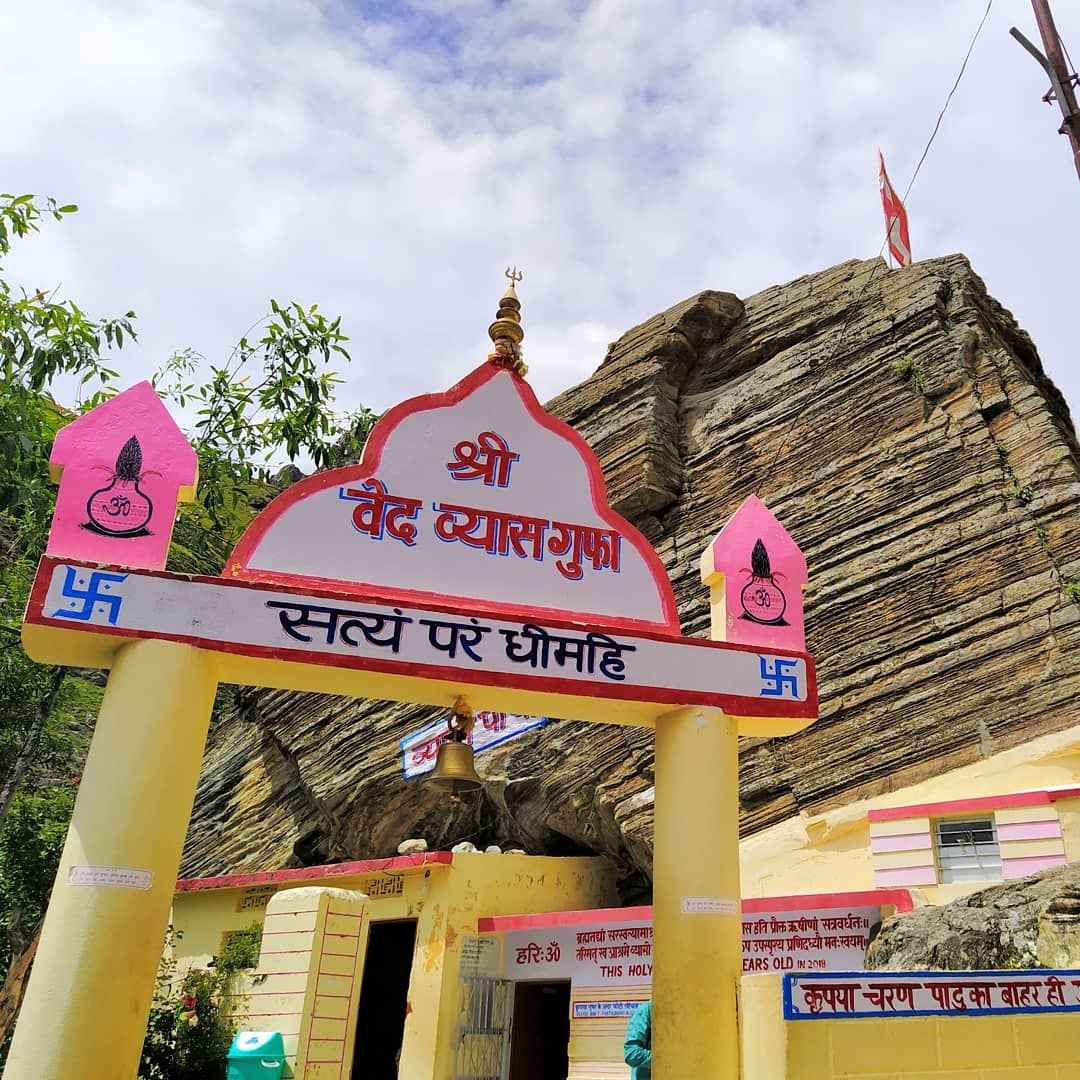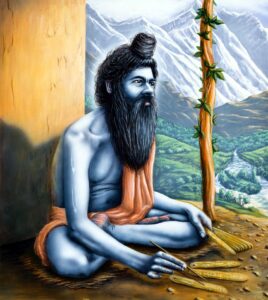
Vyasa Gufa in Badrinath is the cave where Srila Vyasadeva, the literary incarnation of Lord Vishnu compiled the Mahabharata. He had also compiled the eighteen Puranas and split the Vedas into four parts here namely Rig Veda, Sama Veda, Yajur Veda and Atharva Veda.
Located on the banks of the Saraswati river rather confluence of Alakananda River and Saraswathi River, in the Mana village of Uttarakhand state in India, it is also called as Vyasa Pothi. Climbing around 100 steps will take you to the Vyasa Gufa. Mana village is the last Indian village on the Indo-China border. The Pandava brothers along with Draupadi had begun their final Swargarohini Yatra from this village.
The Vyasa Gufa resembles stacked up Vedic literature written on palm leaves. It is believed that these were those palm leaves which could not be included in the works of Vyasadeva. Hence it is called as Vyasa Pothi – a bundle of palm leaves. It is said that Sri Adi-Shankaracharya had met Srila Vyasadeva in the Vyasa Gufa to discuss the Brahma Sutras.
History of Vyasa Gufa
 The Vyasa Gufa is estimated to be 5330 years old as of 2022. Near it, is the Ganesha Gufa where Lord Ganesha wrote down the Mahabharata as per the narration of Vyasadeva.
The Vyasa Gufa is estimated to be 5330 years old as of 2022. Near it, is the Ganesha Gufa where Lord Ganesha wrote down the Mahabharata as per the narration of Vyasadeva.
Vyasadeva is the literary incarnation of Lord Vishnu. He is the son of Sage Parashara and Satyavati Devi. He was named Krishna Dwaipayana Vyasa because He was born on an island in Kalpi Village. Later He was addressed as Vedavyasa after He divided the Vedas into four parts. He is the 28th Vyasa of this Kalpa.
Vyasadeva was looking for someone to help Him write the Mahabharata. While contemplating on the same, He remembered Ganesha, the son of Lord Shiva. Vyasadeva asked Ganesha if he could take up the task of writing down the Mahabharata. He agreed to do the same on the condition that Vyasadeva narrate the Mahabharata without stopping in-between.
Vyasadeva agreed to Ganesha’s condition and put a counter condition that Ganesha should understand every sloka before he writes it. Ganesha agreed. Vyasadeva began narrating the Mahabharata. As Ganesha would catch up, Vedavyasa would create a complex verse which would take time for Lord Ganesha to contemplate. In the meantime, he would compile the next verses.
While Ganesha wrote down the Mahabharata without stopping, his pen broke in the middle. Unable to find another pen, Ganesha broke his own tusk and continued writing the Mahabharata. The place where Ganesha sat and wrote the Mahabharata on Vyasadeva’s dictation is called Ganesha Gufa.
After compiling the Mahabharata, Vyasadeva was not satisfied. While sitting so, Sage Narada arrived to meet Him. Understanding the predicament of Vyasadeva, Sage Narada told Him that He would find true satisfaction only if He compiled the lilas and glories of Sri Krishna and wrote on the goal of the Vedas.
Hearing this, Vyasadeva produced the masterpiece known as the Bhagavata Purana or Srimad Bhagavatam sitting in the Vyasa Gufa.
Darshan inside the Vyasa Gufa
The Vyasa Gufa is accessed through a small and narrow entrance after climbing a few steps from the Mana village. In the limited space of the Gufa are the Deities of Vyasadeva, Shuka Muni, Ganesha and others. The priest of the cave sits in the limited available space welcoming devotees, performing poojas and narrating the lilas around the Gufa.
How to Reach Vyasa Gufa
If you are looking at the best guided tour of Vyasa Gufa with sthala-purana narration and excellent facilities, the Badrinath Yatra conducted by Tirtha Yatra is recommended to be ideal.
Vyasa Gufa is located 4.4 kms away from central Badrinath in Mana village of Uttarakhand. Hence, you have to reach Badrinath to visit Vyasa Gufa. You can use the following means of transportation to reach Badrinath –
By Road: Badrinath is well connected to cities in Uttarakhand via bus services and taxis. You can get direct buses or taxis from Dehradun, Haridwar, Rishikesh, etc. From cities outside Uttarakhand, you can reach cities like Dehradun or Haridwar and then catch a taxi or bus for the journey forward to Badrinath.
There are regular buses from ISBT, Kashmiri Gate, New Delhi to Dehradun and onto Badrinath thereafter.
By Rail: The nearest railway station is at Rishikesh 289 kms away. You can board a train to Rishikesh Railway Station (RKSH) and then board a bus or hire a taxi to Badrinath from Rishikesh. If you are reaching other cities in Uttarakhand by rail, you can adopt the same procedure.
By Air: Jolly Grant International Airport at Dehradun is the nearest airport 306 kms away. You can fly in here and use the rail or road route to reach Badrinath.
Helicopter services are available from Dehradun to Badrinath.
Vyasa Gufa: The hub of Vedic knowledge
When you enter the Vyasa Gufa, you experience an atmosphere of divine calmness. You may look in wonder at this sacred spot where Vyasadeva sat and compiled the Vedas, Eighteen Puranas, Mahabharata and the Bhagavata Purana.
That is a lot of knowledge! Perhaps more than what you can assimilate in your lifetime. Seeing the limited scope of our knowledge, we can pray to Srila Vyasadeva for His causeless mercy to be able to understand the intricacies of the spiritual world or spiritual matters.
0










Leave a Reply